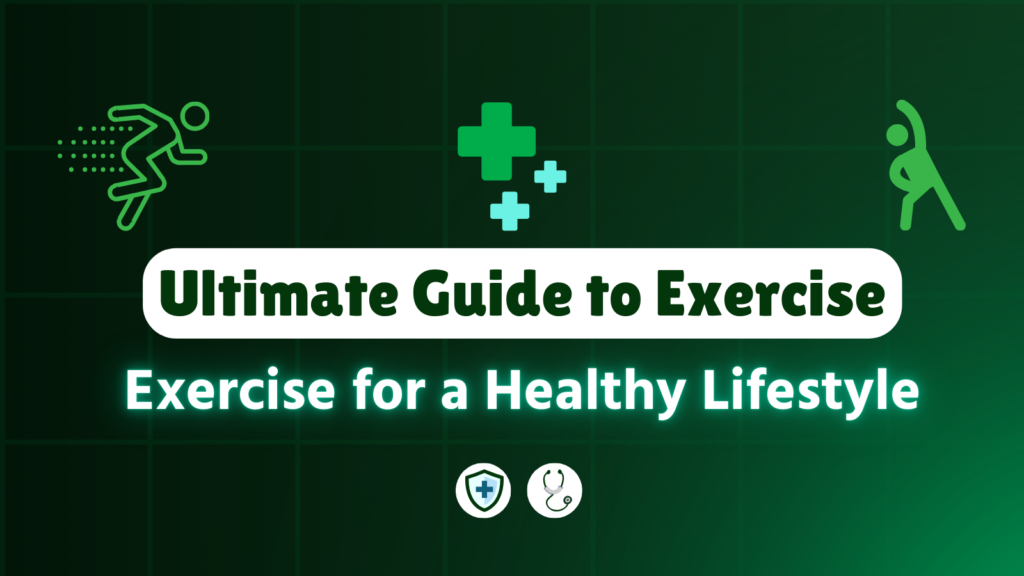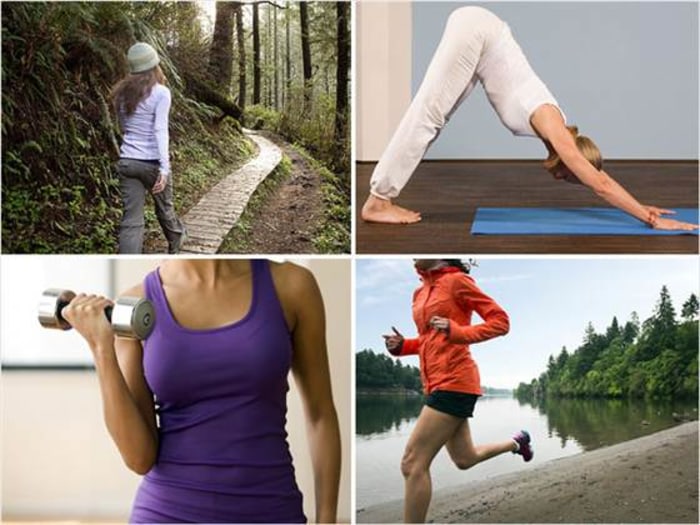“The Ultimate Guide to the Best Workouts for a Healthy and Vibrant Body
On this special occasion, we are delighted to explore the fascinating topic of The Ultimate Guide to the Best Workouts for a Healthy and Vibrant Body. Come along as we weave together engaging insights and offer a fresh perspective to our readers.
About Video The Ultimate Guide to the Best Workouts for a Healthy and Vibrant Body
The Ultimate Guide to the Best Workouts for a Healthy and Vibrant Body

In today’s fast-paced world, prioritizing our health often takes a back seat. However, a healthy body is the cornerstone of a fulfilling life. Regular exercise is a vital component of overall well-being, offering a multitude of physical and mental benefits. But with so many workout options available, it can be overwhelming to determine the best approach. This comprehensive guide will explore a variety of effective workouts, catering to different fitness levels and goals, to help you achieve a healthy and vibrant body.
Why Exercise Matters: The Benefits of a Healthy Body
Before diving into specific workout routines, let’s examine the profound benefits of regular exercise:
- Improved Cardiovascular Health: Exercise strengthens the heart, improves blood circulation, and reduces the risk of heart disease, stroke, and high blood pressure.
- Weight Management: Physical activity helps burn calories, build muscle mass, and regulate metabolism, aiding in weight loss or maintenance.
- Stronger Bones and Muscles: Weight-bearing exercises increase bone density, reducing the risk of osteoporosis. Resistance training builds muscle strength and endurance.
- Enhanced Mood and Mental Health: Exercise releases endorphins, natural mood boosters that alleviate stress, anxiety, and depression.
- Increased Energy Levels: Regular physical activity can combat fatigue and improve overall energy levels.
- Reduced Risk of Chronic Diseases: Exercise lowers the risk of type 2 diabetes, certain cancers, and other chronic conditions.
- Improved Sleep Quality: Physical activity can promote better sleep patterns and reduce insomnia.
- Enhanced Cognitive Function: Exercise improves blood flow to the brain, boosting cognitive function, memory, and concentration.
- Increased Longevity: Studies show that people who exercise regularly tend to live longer and healthier lives.

Types of Workouts for a Healthy Body

A well-rounded fitness routine should incorporate a variety of exercises to target different aspects of physical health. Here are some of the most effective types of workouts:
1. Cardiovascular Exercise (Cardio):
Cardio workouts elevate your heart rate and improve cardiovascular health. They are excellent for burning calories, improving endurance, and boosting overall fitness.
- Running: A classic cardio exercise that can be done outdoors or on a treadmill. Start with a brisk walk and gradually increase your pace and duration.
- Swimming: A low-impact exercise that is gentle on the joints. It works all major muscle groups and is excellent for cardiovascular fitness.
- Cycling: Another low-impact option that can be done outdoors or on a stationary bike. It strengthens the legs and improves cardiovascular health.
- Dancing: A fun and engaging way to get your heart rate up. Choose a dance style you enjoy, such as Zumba, salsa, or hip-hop.
- High-Intensity Interval Training (HIIT): HIIT involves short bursts of intense exercise followed by brief recovery periods. It is highly effective for burning calories and improving cardiovascular fitness in a short amount of time. Examples include sprinting intervals, burpees, and jump squats.

2. Strength Training (Resistance Training):
Strength training involves using resistance to build muscle mass and strength. It is essential for maintaining bone density, improving metabolism, and enhancing overall physical function.
- Weightlifting: Using dumbbells, barbells, or weight machines to perform exercises that target specific muscle groups.
- Bodyweight Exercises: Using your own body weight as resistance, such as push-ups, squats, lunges, and planks.
- Resistance Bands: Using elastic bands to provide resistance during exercises. They are portable, versatile, and suitable for all fitness levels.
- Compound Exercises: Exercises that work multiple muscle groups simultaneously, such as squats, deadlifts, bench presses, and overhead presses.
- Isolation Exercises: Exercises that target a specific muscle group, such as bicep curls, tricep extensions, and calf raises.
3. Flexibility and Mobility Exercises:
Flexibility and mobility exercises improve range of motion, reduce muscle stiffness, and prevent injuries. They are essential for maintaining joint health and overall physical function.
- Stretching: Holding a muscle in a lengthened position for a period of time. Static stretching is best done after a workout, while dynamic stretching is suitable for warming up.
- Yoga: A mind-body practice that combines physical postures, breathing techniques, and meditation. It improves flexibility, strength, balance, and mental well-being.
- Pilates: A low-impact exercise that focuses on core strength, flexibility, and body awareness. It is excellent for improving posture, balance, and coordination.
- Foam Rolling: Using a foam roller to massage muscles and release tension. It can improve flexibility, reduce muscle soreness, and prevent injuries.
- Dynamic Stretching: Performing controlled movements through a full range of motion, such as arm circles, leg swings, and torso twists.
4. Core Workouts:
Core workouts strengthen the muscles in your abdomen, back, and pelvis. A strong core is essential for stability, balance, and preventing back pain.
- Planks: Holding a straight line from head to heels, engaging your core muscles.
- Crunches: Curling your upper body towards your knees, engaging your abdominal muscles.
- Leg Raises: Lifting your legs towards the ceiling, engaging your lower abdominal muscles.
- Russian Twists: Twisting your torso from side to side while holding a weight or medicine ball.
- Bird Dog: Extending one arm and the opposite leg while maintaining a stable core.
Sample Workout Routines
Here are some sample workout routines that incorporate different types of exercises:
1. Full-Body Strength Training (3 times per week):
- Warm-up: 5 minutes of light cardio, such as jogging or jumping jacks.
- Squats: 3 sets of 10-12 repetitions.
- Push-ups: 3 sets of as many repetitions as possible.
- Dumbbell Rows: 3 sets of 10-12 repetitions per arm.
- Overhead Press: 3 sets of 10-12 repetitions.
- Plank: 3 sets, holding for 30-60 seconds.
- Cool-down: 5 minutes of stretching.
2. Cardio and Core (2 times per week):
- Warm-up: 5 minutes of dynamic stretching.
- Running or Cycling: 30-45 minutes at a moderate intensity.
- Crunches: 3 sets of 15-20 repetitions.
- Leg Raises: 3 sets of 15-20 repetitions.
- Russian Twists: 3 sets of 15-20 repetitions per side.
- Bird Dog: 3 sets of 10-12 repetitions per side.
- Cool-down: 5 minutes of static stretching.
3. Flexibility and Mobility (2 times per week):
- Yoga or Pilates: 45-60 minutes.
- Foam Rolling: 10-15 minutes, focusing on major muscle groups.
- Static Stretching: Holding each stretch for 30 seconds.
Tips for Creating a Sustainable Workout Routine
- Set Realistic Goals: Start with small, achievable goals and gradually increase the intensity and duration of your workouts.
- Find Activities You Enjoy: Choose exercises that you find fun and engaging. This will make it easier to stick to your routine.
- Schedule Your Workouts: Treat your workouts like important appointments and schedule them into your calendar.
- Vary Your Routine: Avoid boredom and plateaus by changing up your workouts regularly.
- Listen to Your Body: Pay attention to your body and rest when you need to. Don’t push yourself too hard, especially when you’re just starting out.
- Stay Hydrated: Drink plenty of water before, during, and after your workouts.
- Fuel Your Body: Eat a balanced diet that provides the nutrients you need to support your workouts and recovery.
- Find a Workout Buddy: Exercising with a friend can provide motivation and accountability.
- Track Your Progress: Keep track of your workouts and progress. This will help you stay motivated and see how far you’ve come.
- Be Patient: It takes time to see results. Don’t get discouraged if you don’t see changes immediately. Just keep showing up and putting in the work.
Conclusion
Achieving a healthy and vibrant body is a journey that requires commitment, consistency, and a well-rounded approach to exercise. By incorporating a variety of cardio, strength training, flexibility, and core workouts into your routine, you can improve your physical and mental health, reduce your risk of chronic diseases, and enhance your overall quality of life. Remember to set realistic goals, find activities you enjoy, and listen to your body. With dedication and perseverance, you can achieve the healthy and vibrant body you deserve.

